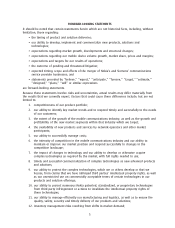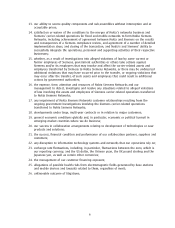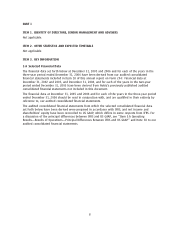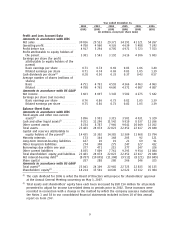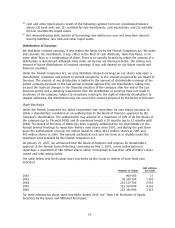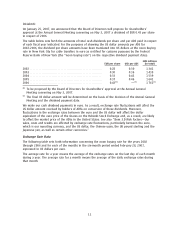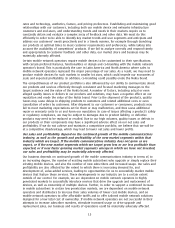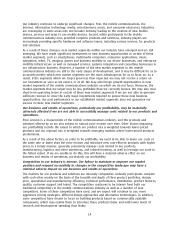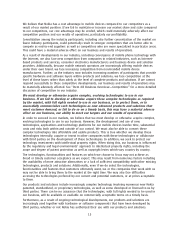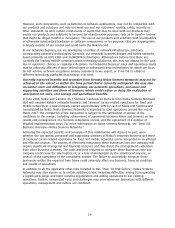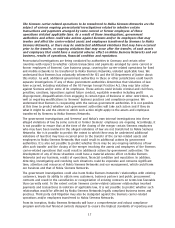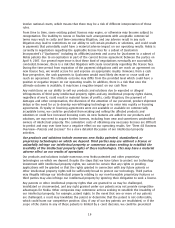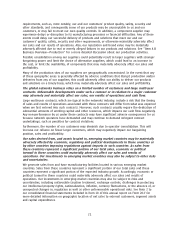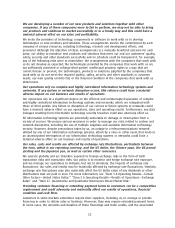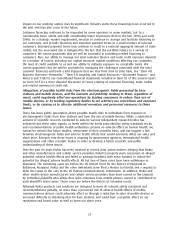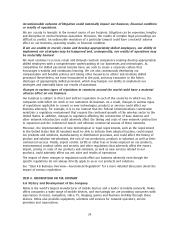Nokia 2006 Annual Report Download - page 15
Download and view the complete annual report
Please find page 15 of the 2006 Nokia annual report below. You can navigate through the pages in the report by either clicking on the pages listed below, or by using the keyword search tool below to find specific information within the annual report.Our industry continues to undergo significant changes. First, the mobile communications, the
Internet, information technology, media, entertainment, music, and consumer electronics industries
are converging in some areas into one broader industry leading to the creation of new mobile
devices, services and ways to use mobile devices. Second, while participants in the mobile
communications industry once provided complete products and solutions, industry players are
increasingly providing specific hardware and software layers, including various services, for products
and solutions.
As a result of these changes, new market segments within our industry have emerged and are still
emerging. We have made significant investments in new business opportunities in certain of these
market segments, such as smartphones, multimedia computers, enterprise applications, music,
navigation, video, TV, imaging, games and business mobility in our device businesses, and enterprise
mobility infrastructure as well as managed services, systems integration and consulting businesses in
our infrastructure business. However, a number of the new market segments in the mobile
communications industry are still in the early stages of development, and it may be difficult for us to
accurately predict which new market segments are the most advantageous for us to focus on. As a
result, if the segments which we target grow less than expected, we may not receive a return on
our investment as soon as we expect, or at all. We may also forego growth opportunities in new
market segments of the mobile communications industry on which we do not focus. Moreover, the
market segments that we target may be less profitable than we currently foresee. We may also incur
shortterm operating losses in certain of these new market segments if we are not able to generate
sufficient revenue to cover the early stage investments required to pursue these new business
opportunities. Our past performance in our established market segments does not guarantee our
success in these new market segments.
Our business and results of operations, particularly our profitability, may be materially
adversely affected if we are not able to successfully manage costs related to our products and
operations.
Price erosion is a characteristic of the mobile communications industry, and the products and
solutions offered by us are also subject to natural price erosion over time. Other factors impacting
our profitability include the extent to which our product mix is weighted towards lowerpriced
products and our regional mix is weighted towards emerging markets where lowerpriced products
predominate.
As a result of the above factors, in order to be profitable, we need to be able to lower our costs at
the same rate or faster than the price erosion and introduce new costefficient products with higher
prices in a timely manner, generally proactively manage costs related to our products,
manufacturing, logistics and other operations, and related licensing, as well as leverage our scale to
the fullest extent. If we are unable to do this, this will have a material adverse effect on our
business and results of operations, particularly our profitability.
Competition in our industry is intense. Our failure to maintain or improve our market
position and respond successfully to changes in the competitive landscape may have a
material adverse impact on our business and results of operations.
The markets for our products and solutions are intensely competitive. Industry participants compete
with each other mainly on the basis of the breadth and depth of their product portfolios, design,
price, operational and manufacturing efficiency, technical performance, distribution, product features,
quality, customer support and brand. The competition continues to be intense from both our
traditional competitors in the mobile communications industry as well as a number of new
competitors. Some of these competitors have used, and we expect will continue to use, more
aggressive pricing strategies, different design approaches and alternative technologies. In addition,
some competitors have chosen to focus on building products based on commercially available
components, which may enable them to introduce these products faster and with lower levels of
research and development spending than Nokia.
14



